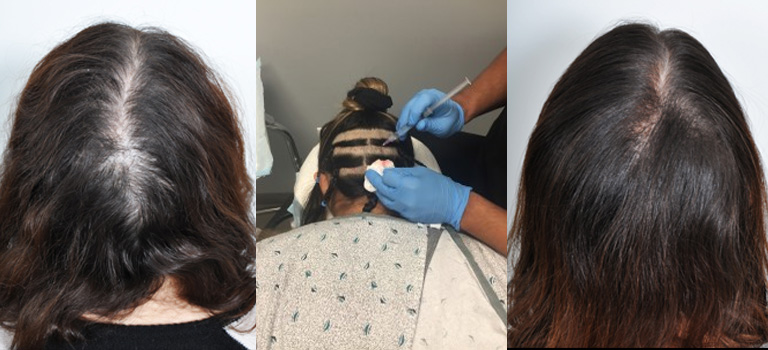When it comes to hair transplants in the San Francisco Bay Area, we see mostly men at our practice, but we know that our patient list does not reflect the full scope of people in the Bay Area and beyond who could benefit from a hair transplant.
About three quarters of the surgical hair transplants reported by American Society of Plastic Surgeons members in 2015 were performed on men. That means, of course, than one quarter of the hair transplant surgeries were performed on women. With about 15,600 total hair transplant procedures reported, the data reveal that more than 4,000 women in the country experienced hair loss that prompted them to seek out a surgical solution.
While those numbers are significant, they do not represent the larger demographic figures related to hair loss. The American Hair Loss Association reports that 40 percent of sufferers are women. Put that together with the ASPS’s stats, and it’s apparent that far more women experience hair loss than seek effective treatment for it.
By digging a little deeper, more specific statistics come to light. Many major media outlets, including the New York Times, have reported that about 30 million women in the United States deal with hereditary hair loss.
Just more than .01 percent of women in the United States who struggle with hair loss sought surgical treatment—at least from ASPS surgeons—in 2015.
Note that those numbers don’t include hair loss attributable to other causes, such as hormone fluctuations, stress, or physical damage from pulling hair back into a ponytail. For those conditions, a change in environment, balanced internal chemistry, or even a simple shift behavior may be enough to prompt hair to regrow. Hair loss can also be an indication of an underlying medical problem, so it is especially important to get a diagnosis before deciding on a specific course of action.
For hereditary loss, patients have choices. Solutions include minoxidil used as a topical therapy applied directly to the scalp, and platelet-rich plasma, which involves pulling particularly beneficial elements out of a patient’s own blood and using them to stimulate new growth.
From a surgical standpoint, one of the most common and reliable solutions is a hair transplant.
There have been many hair transplant-related-developments over the years, but the most recent is NeoGraft®, which draws on long-used methods and improves them by eliminating some of the drawbacks historically associated with surgical hair transplant procedures.
NeoGraft® works by collecting thousands of hair grafts from around the head, automating and improving the speed and precision of a process that can also be done by hand. The more modern method reduces the invasiveness of the overall hair transplant procedure, which translates into less scarring on the scalp and a reduced recovery time afterward.
The NeoGraft® system is also unique in that gathers follicles from a variety of places on the head, whereas earlier hair transplant collection methods involved cutting an entire linear strip out of one particular section of the scalp, ultimately leaving a scar in the form of a line. This tactic leaves only a very small mark in the form of a dot wherever a follicle is extracted. These dots are scattered and camouflaged under a patient’s existing hair.
Drs. Lieberman & Parikh both have an artistic eye coupled with the medical knowledge and experience to offer men and women natural-looking results that are indistinguishable from a pre-loss head of hair.
Hair Loss Treatments for Women in Bay Area, Hair Restoration for Women in Bay Area, Hair Restoration for Women in Palo Alto, Hair Restoration for Women in California, Hair Loss Treatments for Women in California, Hair Transplant for Women in California, Hair treatments for Women in California
If you’d like to discuss your particular hair loss situation with the hair transplant experts, Drs. Lieberman and Parikh, please contact our office at (650) 327-3232 or email info@fortheface.com
